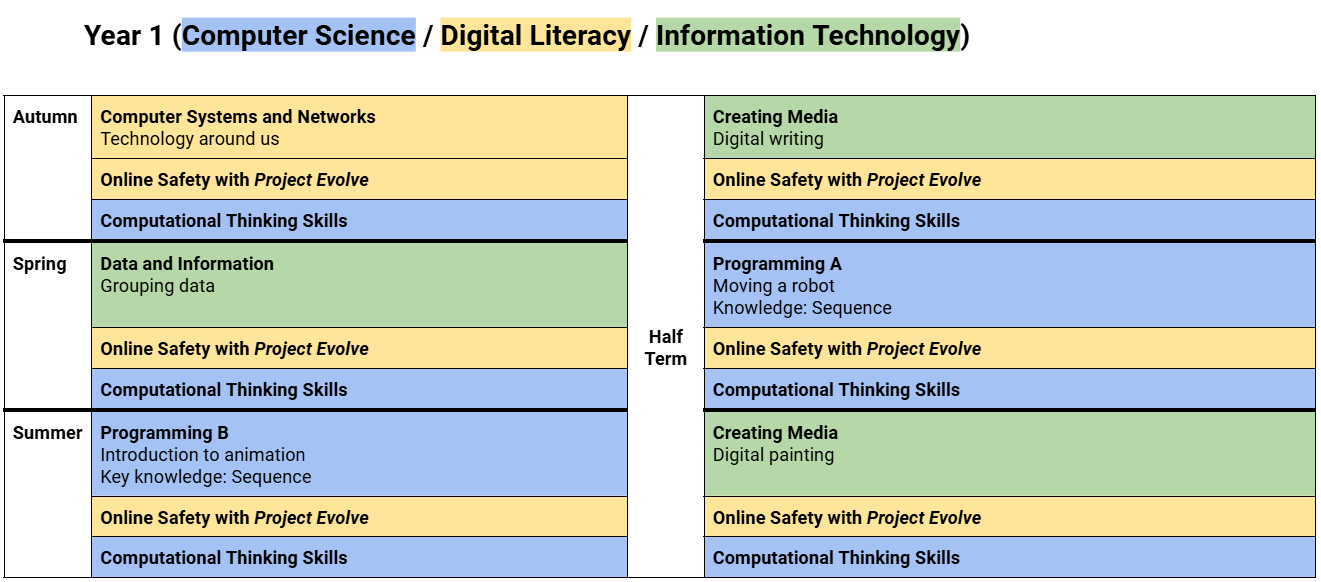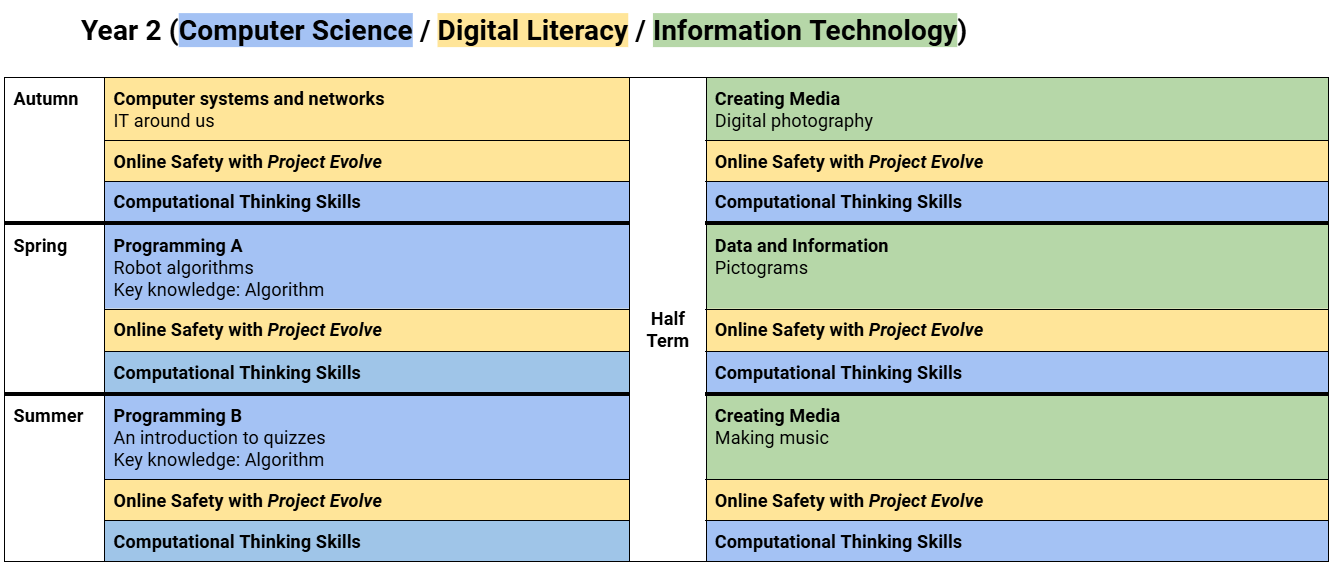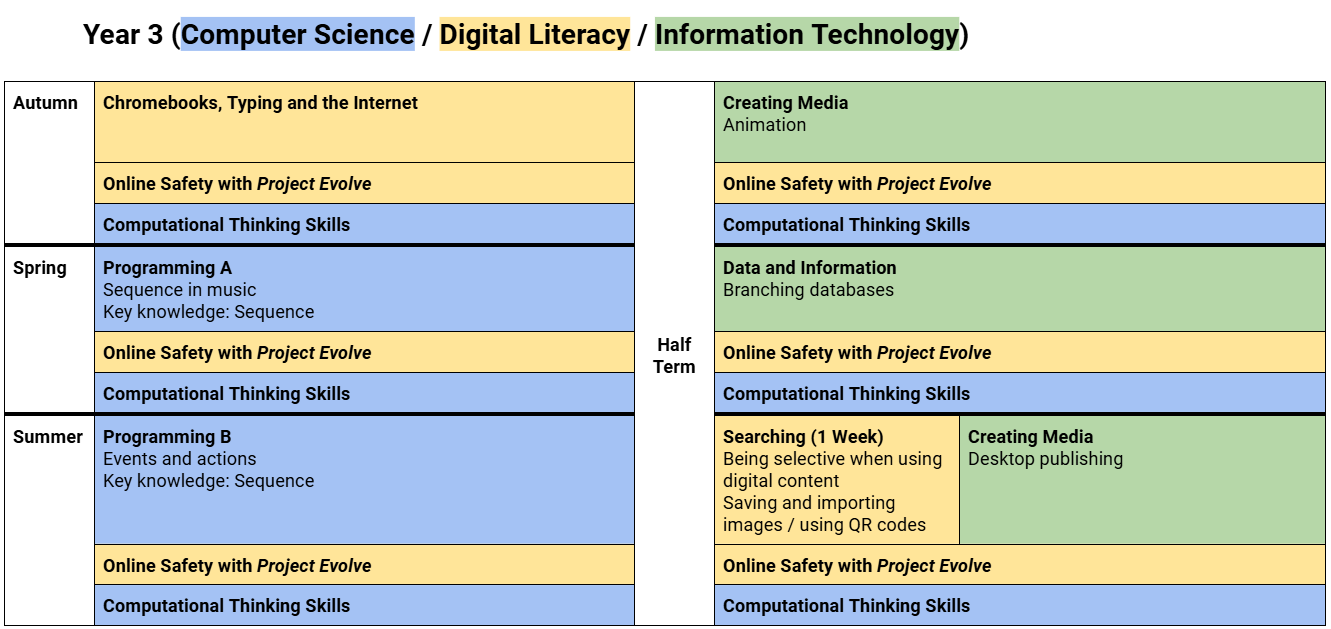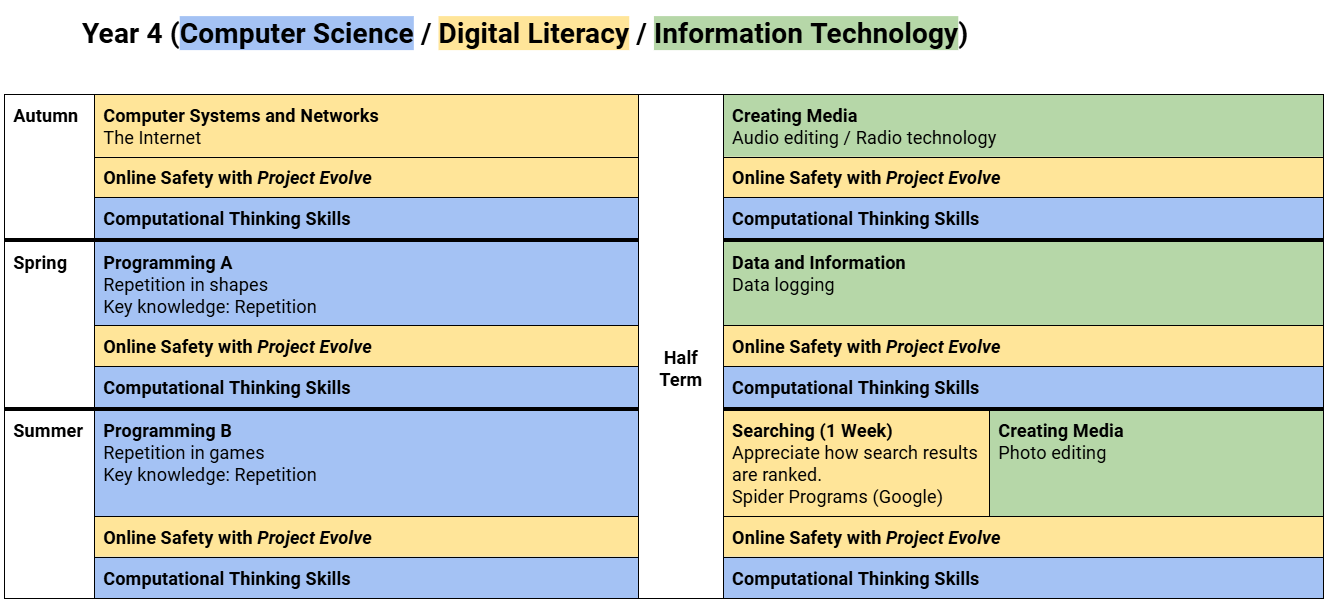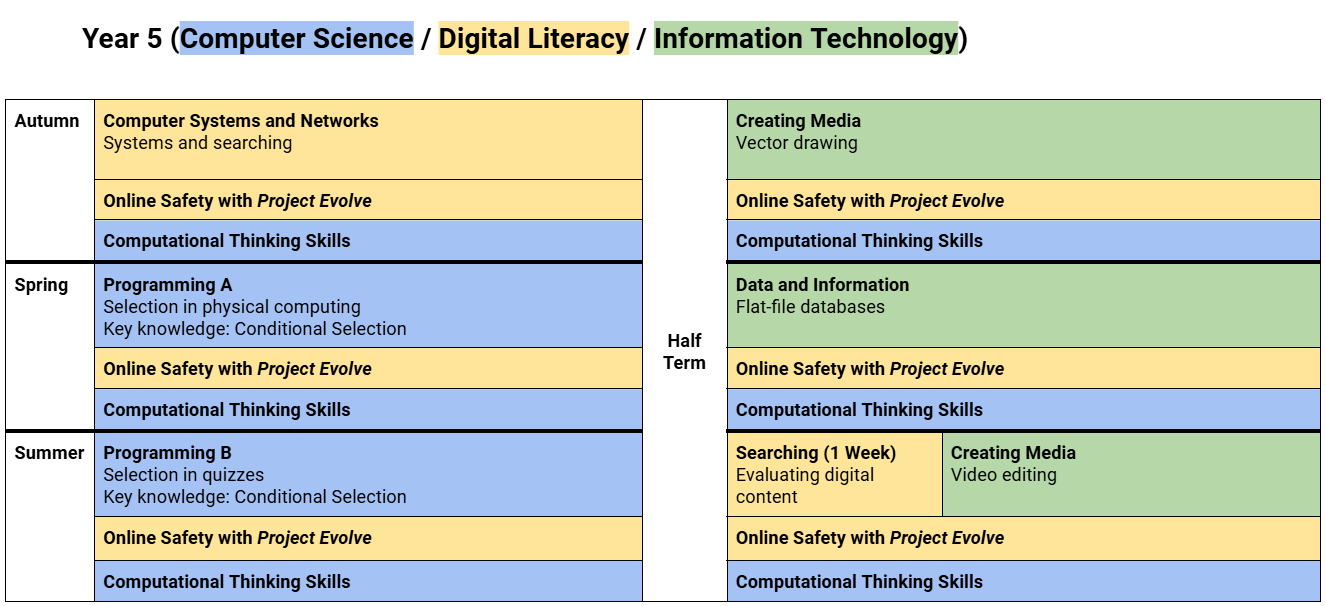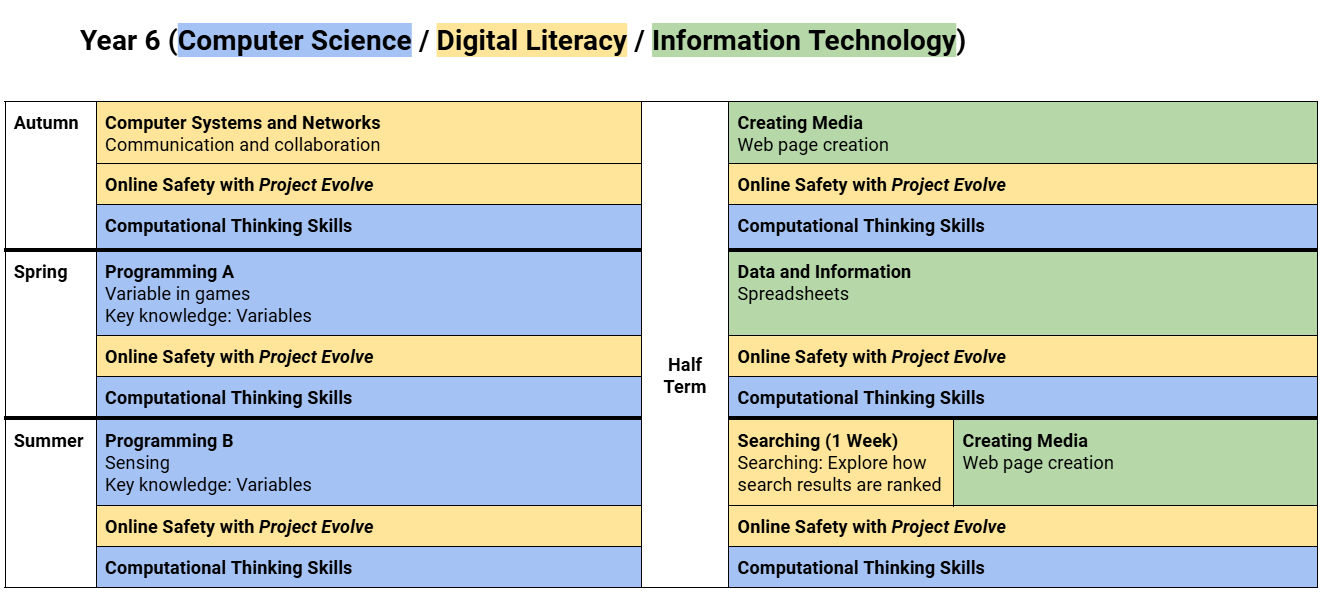Computing
Vision Statement
Our aim is to develop curious and creative users of technology that can operate safely in digital spaces and interact confidently with high-level programming languages. We want to inspire the next generation of morally-grounded, forward-thinking software engineers. We recognise that Computing - perhaps more so than any other subject - is a rapidly evolving discipline, and as such we strive to deliver a relevant and responsive curriculum that keeps pace and looks to the future.
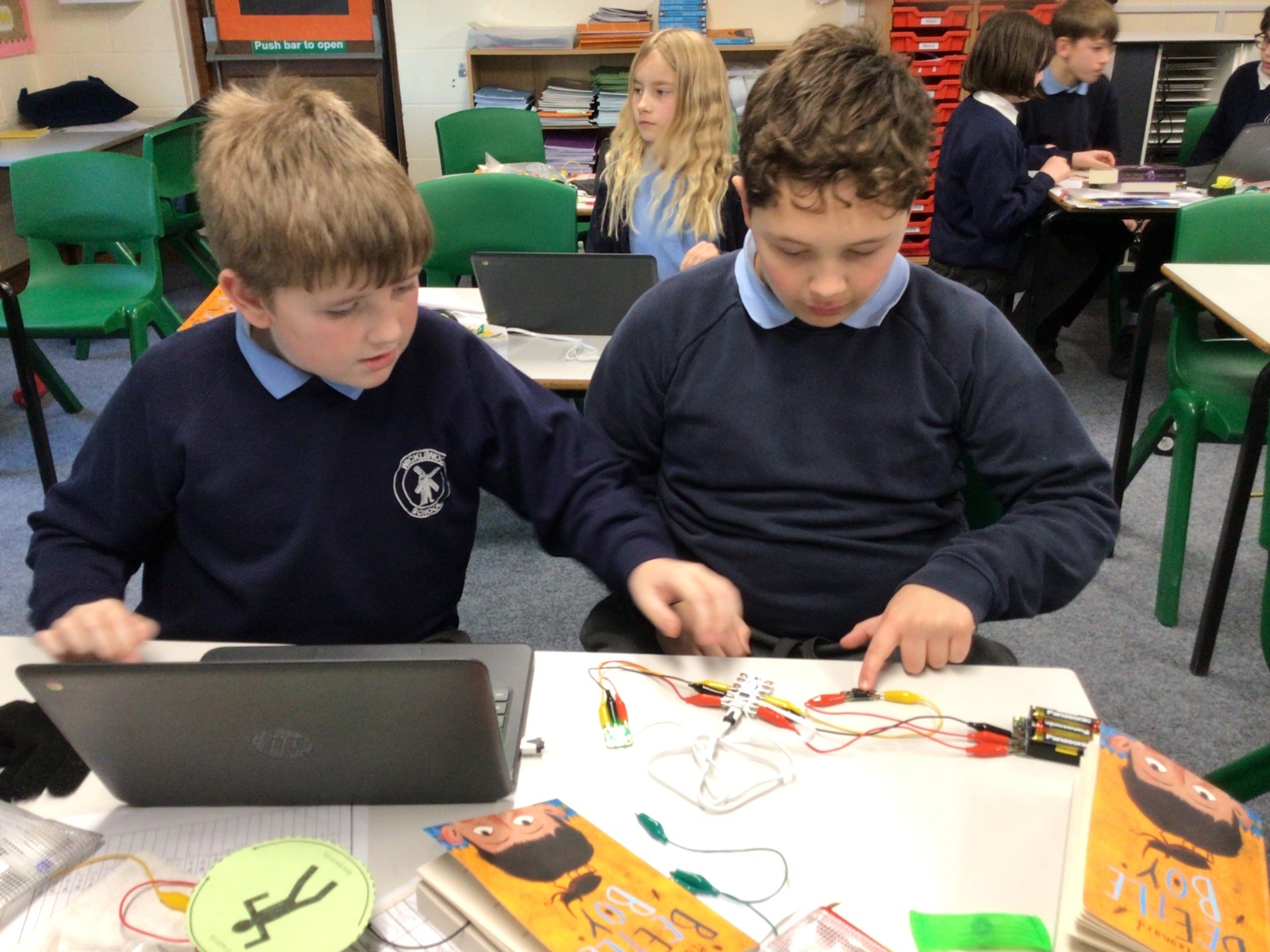
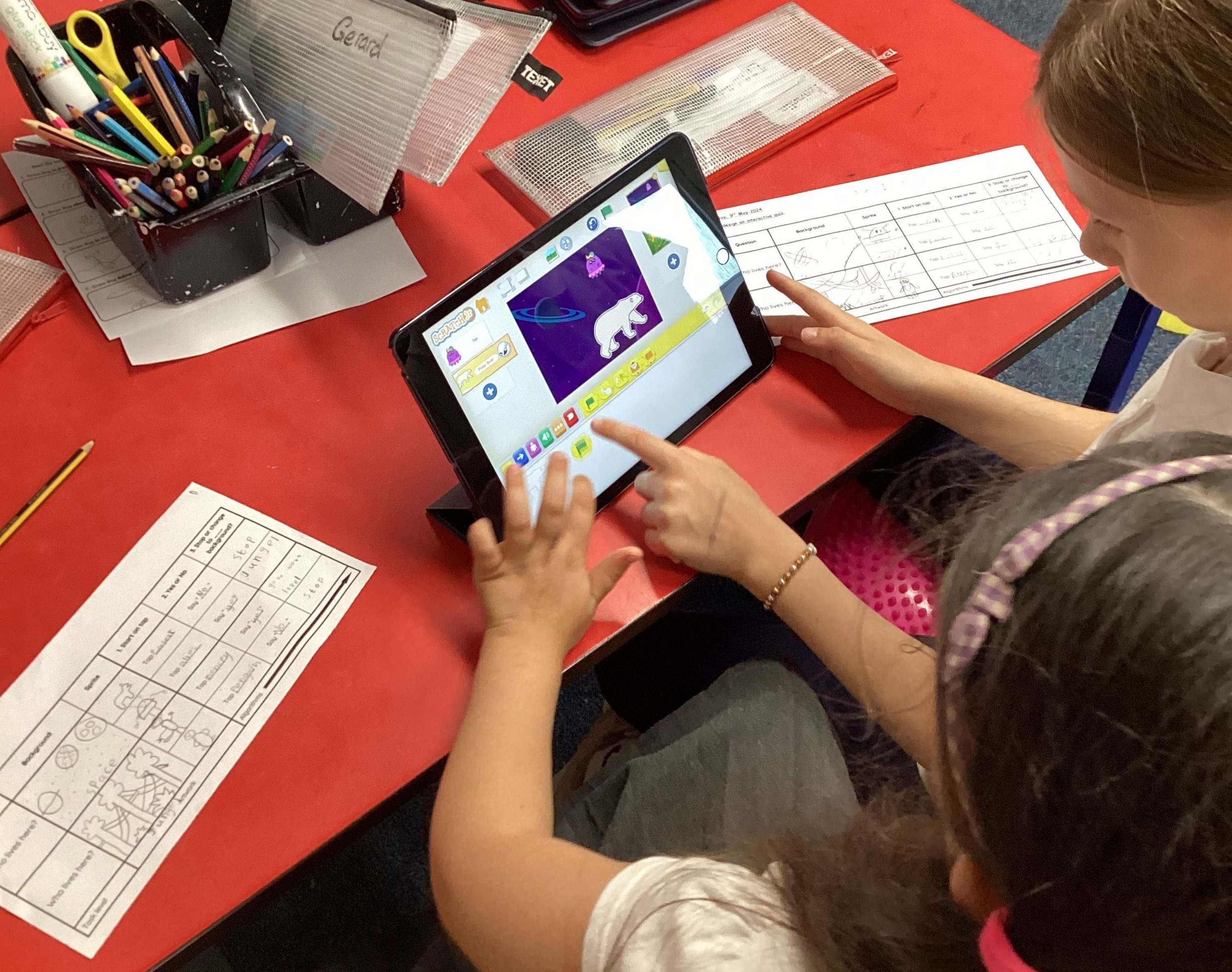
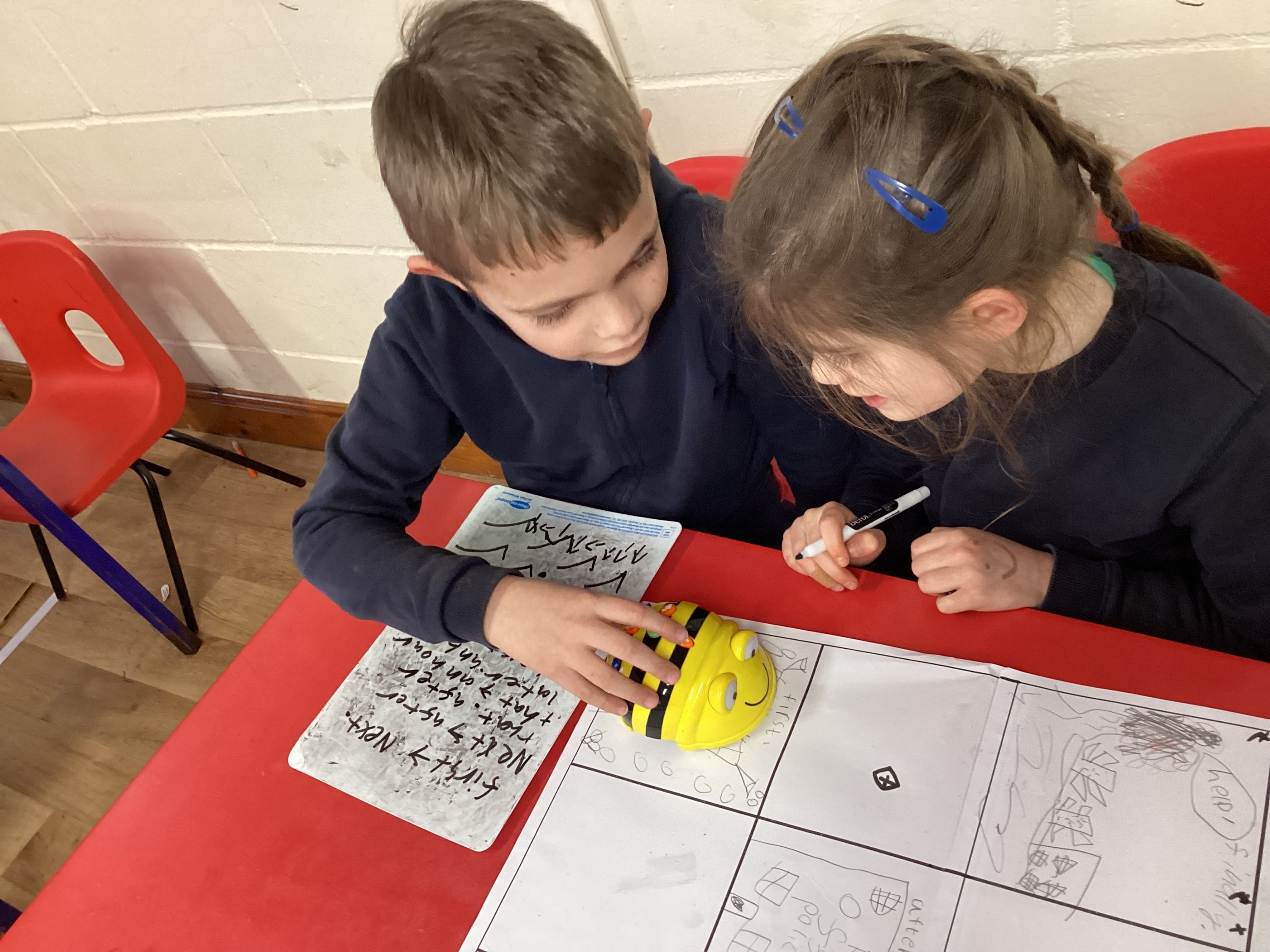
We will provide relevant training for our staff, ensure Computing resources are effectively used, work with external partners to ensure our assessments are accurate, use assessments to carefully plan next steps, provide appropriate resources to support all our pupils and offer enrichment opportunities to inspire a life-long love of computing and technology.
To achieve this, our Computing lessons are observed to be of the correct challenge for all groups of pupils, teachers are confident to make judgements in Computing, progress is achieved and next steps are carefully planned.
We are well resourced to deliver this curriculum. Every classroom has a teacher laptop and interactive whiteboard. Each year group has access to Chromebooks and iPads, which can be brought into the classroom. We have a range of additional resources such as Beebots, Crumble microcontrollers and BBC Micro:bits.
In our Programming units, pupils will be able to:
- give instructions to my friend
- tell you the order I need to do things, called an algorithm
- program a robot or software to do a particular task (Beebot)
- spot where a program goes wrong so that I can debug it
- write algorithms, debug and test code (via languages and applications like Scratch, Logo and Python) and control technology such as BBC Micro:bits and Crumble controllers
- use repetition and iteration (forever/count-controlled loops) to write more efficient code
- use conditional selection (if... then statements) to control the flow of a program
- save information inside a variable so it can be used throughout a program
In our Data and Information units, pupils will be able to:
- use the most suitable technology to collect information
- make bar charts, line graphs and pie charts and use them to answer questions
- enter data into a spreadsheet and use functions and formulae to answer questions
- store data in the correct format in a database and use it to answer questions
In our Creating Media units, pupils will be able to:
- use PCs and tablet devices to store, retrieve, edit and present their ideas in different word processing apps and software, such as Google Pages, Sheets and Slides
- use technology to create digital artwork, stop motion animation and video
- use technology to create digital music, using apps such as GarageBand and Launchpad
In our Digital Literacy units, pupils will be able to:
- identify uses of technology within school and at home
- think about how long I should be spending online
- keep my passwords secure
- cite other’s work following copyright
- become responsible digital citizens
- explore how the media can play a powerful role in shaping our sense of identity
In our Online Safety units (Project Evolve), pupils will be able to:
- tell an adult when they see something unexpected or worrying online
- identify the personal information they shouldn’t share online
- talk about why it’s important to be respectful online
- recognise what games are safe and appropriate
- recognise a website that’s right for them
- check with an adult before downloading any new software
- follow school's online safety rules
Long term overview
Our EYFS computing is delivered as part of ongoing continuous provision.
